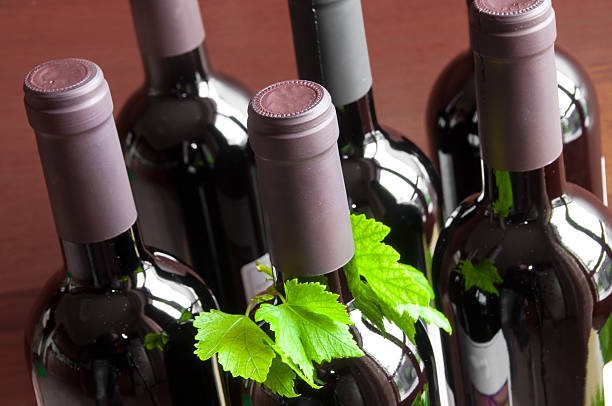Introduction to Kinza Herb
The “Kinza Herb” is a common name for the leafy part of the Coriandrum sativum plant, found in South Asia and the Middle East, also known as cilantro or coriander leaf in English. It is widely used in culinary, medicinal, and cultural contexts. For readers interested in botanical therapy, Kinza is appealing due to its rich history of use, the abundance of bioactive compounds, and increasing scientific interest.
In this article, you’ll learn:
- What Kinza (coriander) is, botanically and geographically
- Its traditional uses in medicine
- What the scientific research shows about potential health benefits
- how to grow, prepare, and use it safely
My goal is to provide you with a fact-based, easy-to-read resource that allows you to decide whether or how to incorporate Kinza Herb into your herbal medicine repertoire.
Botanical Description
Taxonomy and Scientific Name
- Botanical name: Coriandrum sativum L.
- Family: Apiaceae (also known as Umbelliferae), the carrot/parsley/celery family. It is an annual herb — meaning it completes its life cycle in one growing season.
Physical Characteristics
- The plant grows up to 20–70 cm in height in favorable conditions.
- Leaves: Young leaves are broad and flat; they are more finely divided, and the bolts of the plant (i.e., the flowers) or those at maturity are fed as wings.
- Flowers: Small, white or pink, born in an umbel (a group of stalks of small flowers that spread from a common point), specific to members of the epiassey family.
- Seeds (fruits): when crushing, they have a warm, spicy, citrus aroma. They vary chemically from leaves.
Geographical Origin and Habitat
Native and Historical Distribution
- Coriandrum SATIVUM is believed to have originated in the Mediterranean region and the Middle East.
- It has been used since antiquity and cultivated: evidence exists in the graves of ancient Egypt; Ancient texts were used in India, Persia, and surrounding areas.
Current Habitat and Cultivation
- Herbs grow in many regions of the world where climate permits – from South Asia, the Middle East, parts of Europe, and America. It requires a temperate climate, but is sensitive to the extreme limit (very hot weather can cause bolting; frost destroys it).
- Soil: well-monotonous soil, moderately fertile with decent organic materials. Slightly acidic pH is neutral ideal. Sunlight: For the shadow to the full sun. Regular moisture is helpful.
Traditional Medicinal Uses
Coriander (Kinza) has a long history in folk medicine, and many cultures have a traditional use. While the name “kinza” can sometimes refer to other herbal plants in specific local traditions, the extensive body of conventional literature combines it with the Korean Drum Sativam. Key traditional uses include:
Digestive Aid
- Leaves, seeds, and infections are used to reduce indigestion, swelling, gas, and flatulence. Traditional medical systems in India, Pakistan, and the Middle East often include coriander tea or decoction for digestive complaints.
Respiratory and Urinary Complaints
- Seeds are mainly used to support cough, cold, or urinary health in traditional dishes.
Skin Conditions
- Topical use of poultry, paste, crushed leaves, or seed extracts is used to address the traditional use of iton minor on minor skin, wounds, or infections.
Metabolic and Detoxifying Uses
- Use in traditional diet or herbal formulas to “calm” the body, relieve toxins, or support liver health. While accurate meanings vary in different systems, many traditions keep coriander physically helpful in balancing humor or energy.
Potential Health Benefits
Below are some health benefits suggested by scientific research – these are possible benefits, not guaranteed or universally proven in humans. Always use caution and ideally under guidance.
Antioxidant and Anti‐inflammatory Activity
- C. Sativum leaves and seeds contain polyphenols, flavonoids, and other antioxidant compounds. These substances help in removing dirty free radicals and can reduce oxidative stress.
- The study suggests that coriander extracts have an anti-inflammatory action (in lab or animal models), which diminishes intermediaries such as nitric oxide, COX-2, and IL-6.
Cardiovascular Support
- Research suggests that coriander can help with hypolipidemic effects (improving cholesterol profiles), antihypertensive effects (reducing blood pressure), and antiatherogenic activities (plaque formation or lipid oxidation).
- In animal models, coriander extracts improved heart health markers.
Metabolic and Glycemic Benefits
- Evidence (mostly pre-pregnancy indicates that thyme helps regulate glucose levels, improving glucose tolerance and reducing blood sugar spikes.
- It was also suggested to help in combining metabolic syndrome references (obesity, hypertension, dyslipidemia).
Other Potential Benefits
- Anti-antimicrobial: Essential oil or extract from coriander has shown activity against various microbes in laboratory studies.
- Digestive Health: Beyond relieving bloating and gas, some studies on coriander seed extracts have shown mild diuretic and digestive enzyme-stimulating effects.
- Possibly neuroprotective or worrying effects, although data are more limited.
Scientific Research and Evidence
Here we examine what peer‐reviewed studies and reviews have determined, along with their limitations.
Key Studies & Reviews
- A review of 2023 on polyphenols in coriander (C. sativum) has highlighted that rich extracts in these compounds have shown promise in protecting against inflammation, related disorders, obesity, celiac disease, and diabetes.
- Another recent review focuses on the cardiovascular benefits of coriander, which exhibits antihypertensive, hypolipidemic, antiatherogenic, and cardioprotective potential in large-scale animal studies.
Limitations & Gaps in Research
- Many studies are in vitro (test) city) or in vivo in animals, not human clinical testing – conclusions cannot always translate into humans.
- Dosage, standardization, and part of the plant (leaf versus seed versus extract) vary widely between studies; It is difficult to generalize which amount or preparation is effective or safe accurately.
- There is weak evidence in some claimed uses (eg, “heavy metal detox”, or “complete cure” of chronic disease). The claim of heavy metal detox is popular in folk or alternative medicine, but human evidence is limited and mixed.
Cultivation and Harvesting
If you are considering growing Kinza (coriander) yourself, here are practical tips.
Growing Conditions
- Climate and Time: Grows best in a temperate climate. It tolerates mild cold, but high heat causes it to bolt, which reduces the taste of the leaf. Sow in the early spring or autumn in a hot climate.
- Soil: well-drained, fertile soil with good organic matter. The neutral pH (about 6.2 to 7.0) is a slightly acidic ideal. Avoid waterlogging.
- Sunlight: The full sun gives the best growth, although a bit of shade in the very hot afternoon helps prevent bolting.
Planting & Harvesting
- Seeds can be sown directly in soil or containers—thin transplanting to prevent congestion.
- For leaves (use of herbs): When the plant is young (before flowering), repeatedly cut out external leaves to encourage fresh growth.
- For seeds: Allow the plant to swell, then dry and collect the seed pod when it turns brown.
Storage
- Fresh leaves: store in refrigerator, wrapped in damp paper or in airtight bags, but flavour declines over days.
- Seeds: dry thoroughly, store in airtight containers in cool, dark places.
Preparation and Consumption Methods
How you prepare Kinza herb affects its flavor, potency, and health properties.
Common Forms
- Fresh leaves (cilantro / Kinza) – used raw or at the end of cooking to preserve volatile compounds.
- Seeds – used whole, crushed, or as ground spice. Different phytochemicals are present in seeds vs leaves.
- Extracts / essential oils – more concentrated; often used in research or herbal supplements (where legal).
Ways to Use
- Culinary: in salads, garnishes, sauces, salsas; as flavouring in soups, stews.
- Herbal tea/infusions: fresh or dried leaves/seeds steeped in hot water.
- Topical: poultices, pastes for skin; in some traditional creams or balms.
Dosage Guidance (General, Non‐prescriptive)
Because clinical studies in humans are limited, there is no standard therapeutic dose. Some general practices:
- A small handful of fresh leaves (a few grams) daily is typical in the diet.
- Seed teas or infusions: perhaps 1–2 grams of seed per cup of water, once or twice a day in traditional use.
- Extracts: Follow the manufacturer’s instructions; ensure you use standardized products if available.
Potential Side Effects and Precautions
Essential to be aware of the risks and who should avoid Kinza/coriander.
- Allergies: Some people may experience allergic reactions – skin irritation, rashes, possibly more severe in rare cases. Apiaceae includes many related plants that also provoke allergies.
- Gastrointestinal disturbance: There may be discomfort, resentment, or other symptoms in very sensitive individuals.
- Interaction issues: With any herb, coriander extracts can interact with some drugs (such as affecting liver enzymes), especially as an extract. If you are on medication, consult a medical professional.
- Pregnancy and breastfeeding: safety data are limited; use carefully and avoid high doses under professional supervision.
- Quality/contamination: Herbal products may be different; Make sure you get clean, high-quality herbs free from contaminants (pesticides, heavy metals).
Conclusion
Kinza Herb (Korean Drum Cativam) serves as a classic example of a cooking herb with a long-standing role in traditional medicine. Many people now value it during pregnancy for its antioxidant, anti-inflammatory, heart, metabolism, and antimicrobial benefits. Although researchers have conducted limited human clinical studies, the growing body of evidence shows promise, especially when people eat the herb as part of a regular diet rather than expecting it to act as a “magic treatment.”
If you are health-conscious and consider using Kinza herb, it is prudent to integrate fresh leaves or seeds into your food, ensure good quality, and start with a moderate volume. As usual, especially for severe health conditions or during pregnancy, consult a healthcare professional.



